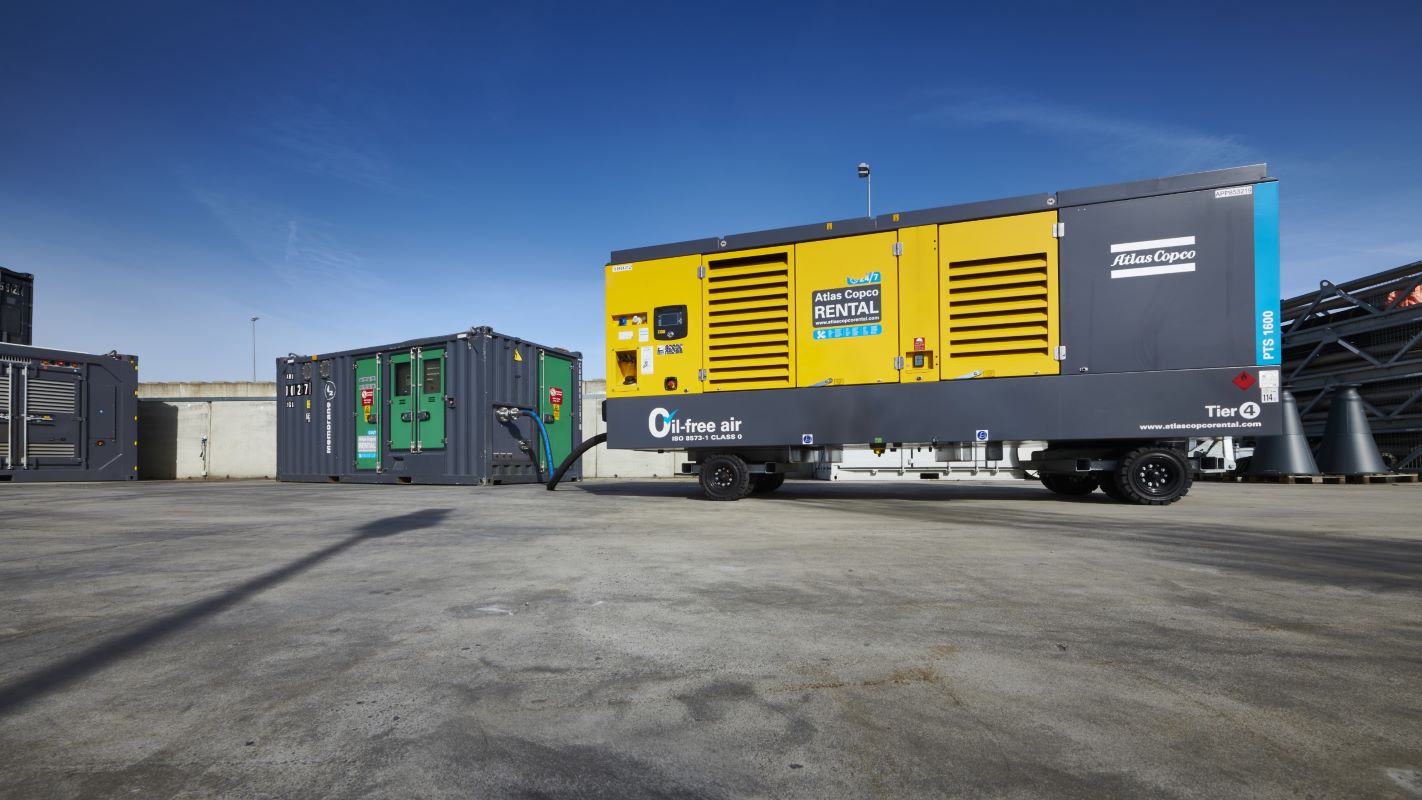
Compressed Air – Be Prepared for Any Contingency

Compressed air can be a critical resource in the operation of many businesses however you never know when equipment failure may occur.
The solution? Having comprehensive contingency plans in place can help you mitigate this and minimise the financial and operational impact of downtime.
Experts from NEPIC member, Atlas Copco Specialty Rental UK and Ireland, have provided an insight into what to consider when contingency planning for compressed air systems.
Whilst each company’s requirements for a compressed air backup system will vary, depending on their facility’s needs and the importance of compressed air to their operations, the following points are key elements every organisation should consider when contingency planning for compressed air systems.
Assessing Risk
It is imperative for a quick response and a unified approach to emergency outages, that organisations build their compressed air contingency plan into their overall emergency response plan or disaster recovery plan. This should include defined roles, responsibilities, communication protocols and timeframes, as well as establishing a chain of command for decision-making.
The initial focus for contingency planning for compressed air should be conducting the relevant assessments, notably calculating risk and criticality. This should include analysing potential failure points in your compressed air system, the likelihood and impact of failures, and the processes and equipment that rely on compressed air. The output of these assessments will help you determine priorities for your compressed air contingency plan.
System Requirements
The next step is to determine the requirements for the backup system, such as pressure range, flow range, air quality and reference temperature. It is also important to consider any additional specifications your air compressor must meet for example energy efficiency, emission levels or restricted noise levels.
Further considerations to make include the features required, the connection conditions and potential limitations.
• Are there any restrictions for the footprint of the compressed air system? For example, size and weight restrictions.
• Does your site or facility have any access restrictions which could impact the delivery and mobilisation of the backup compressed air unit?
• What are the available power sources and what connections are required? Do you have suitable backup power sources? For example, modular power generators which can keep your compressed air system running during power outages.
• Are there any technology features you require the system to have? For example, remote monitoring capabilities.
In addition to the system itself, it is important to account for any ancillaries or accessories that are required for the operation of the backup system. For example, distribution lines, hoses, air dryers, boosters, filters, and fuel.
A clear outline of your system requirements will also help you to determine the most appropriate contingency solution for your compressed air systems, whether you opt to purchase and store a backup compressor onsite or opt for a temporary rental compressor. For example, onsite backup systems require a large storage space whereas rental solutions can be provided as and when needed.
Response Time
The time it takes to commission the backup system and reach the necessary pressure levels must align with your operational needs and therefore should be calculated as part of your contingency planning.
There are many logistical factors which can impact the time to connect. For example, if you opt for an onsite backup system, how quickly can your team mobilise the solution and do they have the skillset to do so?
For a rental solution, does your supplier have a logistics team that can coordinate the transport? Are they available 24/7? If you require ancillaries and accessories, a plug and play compressed air configuration pre-fitted with dryers, all packed on one trailer, may be an ideal option.
Regulatory Compliance
Ensure that the backup system complies with relevant industry regulations and safety standards, as well as any internal environmental guidelines and safety protocols.
Equipment Expertise
It is imperative to ensure that there are personnel in place who can monitor, maintain and operate the compressed air system.
For onsite backup solutions you must ensure that your team is trained, and certified where required, to commission and operate the system – and that they have the resource to do so at a moment’s notice. What’s more, onsite backup systems require regular maintenance and rigorous testing to ensure they remain in working condition. Without this, there is a risk that the backup system may not operate as expected – or even at all – during an emergency.
Alternatively, some rental solution companies can provide this for you, helping to ease the operational burden on your team. When sourcing a rental solution, ensure your equipment supplier can provide the required level of support and maintenance.
Review and Refine
Once you have your contingency plan in place, it is important to regularly review and update it, particularly as your facility and processes evolve.
Atlas Copco Specialty Rental UK and Ireland is a leading provider of state-of-the-art temporary air compressors. This includes diesel or electric driven compressors, 100% oil-free compressors, oil-injected compressors, as well as boosters and air treatment equipment such as air dryers and filters. The company also provides nitrogen generators, modular power generators and industrial steam boilers for short or long-term demands, planned contingencies or unexpected emergencies.
Atlas Copco Specialty Rental can develop and implement a contingency plan, identifying the exact assets, connections, and specification a company will require for rapid deployment, all in line with the required regulatory bodies.
With a contingency plan in place, in the event of a machine failure or system outage, your downtime will be minimised and operations can continue.
External URL: www.atlascopcorental.com
By Atlas Copco
251 Views
Recent Posts
- CBAM and the Role of LCA
- Join WBD for our Imposter Syndrome Fireside Chat – 11th February @ The Wilton Centre
- Secerna Expands Life Sciences Team with the Addition of Trainee Patent Attorney
- Addison in ground breaking SAF development
- Flexitallic and TT Gaskets join forces to drive innovation within the New Energy sector
Back to News >



